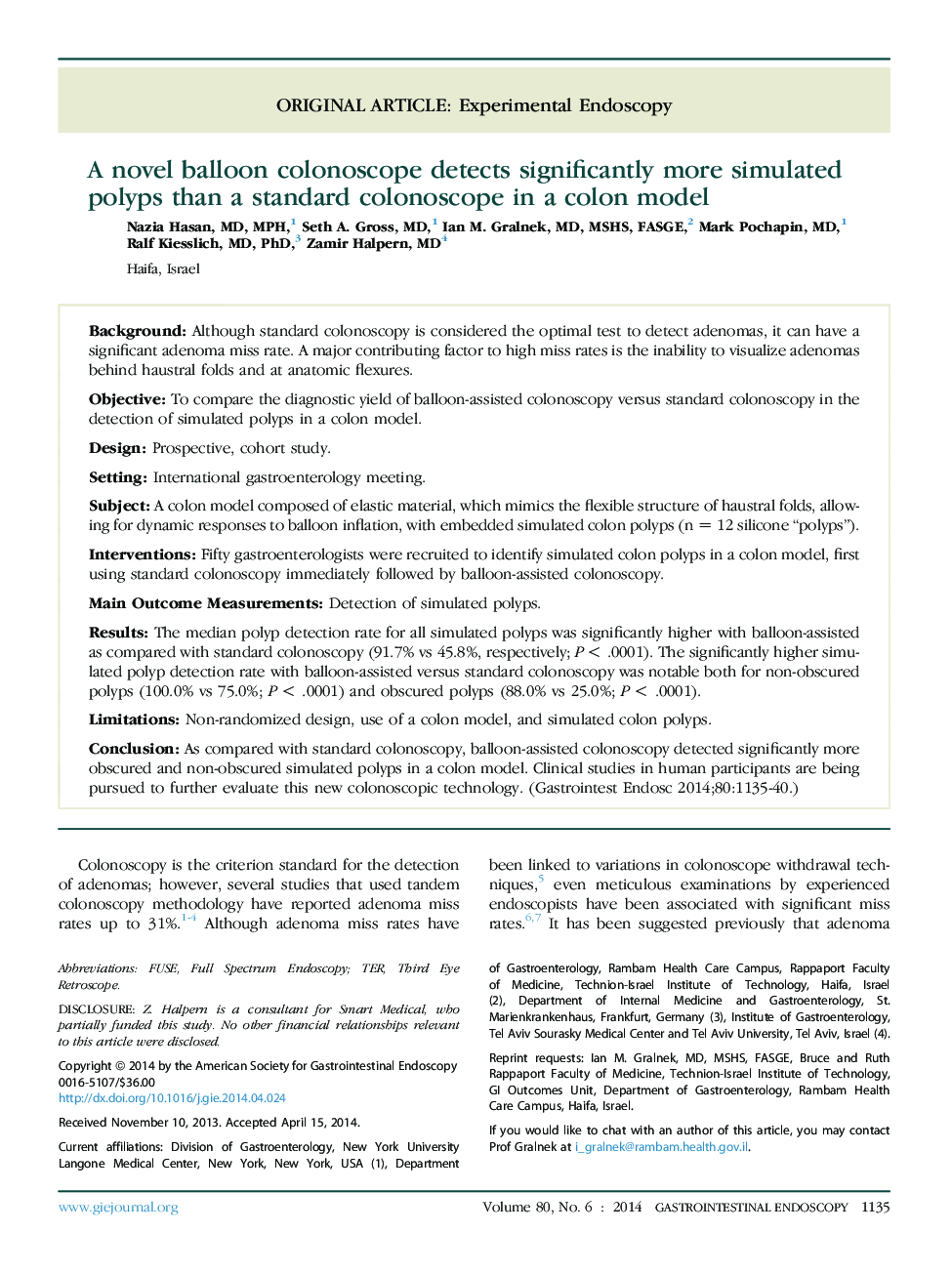| Article ID | Journal | Published Year | Pages | File Type |
|---|---|---|---|---|
| 3302712 | Gastrointestinal Endoscopy | 2014 | 6 Pages |
BackgroundAlthough standard colonoscopy is considered the optimal test to detect adenomas, it can have a significant adenoma miss rate. A major contributing factor to high miss rates is the inability to visualize adenomas behind haustral folds and at anatomic flexures.ObjectiveTo compare the diagnostic yield of balloon-assisted colonoscopy versus standard colonoscopy in the detection of simulated polyps in a colon model.DesignProspective, cohort study.SettingInternational gastroenterology meeting.SubjectA colon model composed of elastic material, which mimics the flexible structure of haustral folds, allowing for dynamic responses to balloon inflation, with embedded simulated colon polyps (n = 12 silicone “polyps”).InterventionsFifty gastroenterologists were recruited to identify simulated colon polyps in a colon model, first using standard colonoscopy immediately followed by balloon-assisted colonoscopy.Main Outcome MeasurementsDetection of simulated polyps.ResultsThe median polyp detection rate for all simulated polyps was significantly higher with balloon-assisted as compared with standard colonoscopy (91.7% vs 45.8%, respectively; P < .0001). The significantly higher simulated polyp detection rate with balloon-assisted versus standard colonoscopy was notable both for non-obscured polyps (100.0% vs 75.0%; P < .0001) and obscured polyps (88.0% vs 25.0%; P < .0001).LimitationsNon-randomized design, use of a colon model, and simulated colon polyps.ConclusionAs compared with standard colonoscopy, balloon-assisted colonoscopy detected significantly more obscured and non-obscured simulated polyps in a colon model. Clinical studies in human participants are being pursued to further evaluate this new colonoscopic technology.
